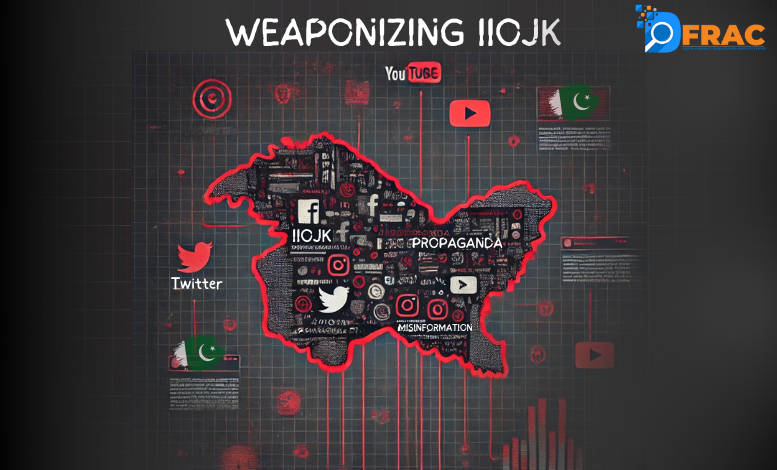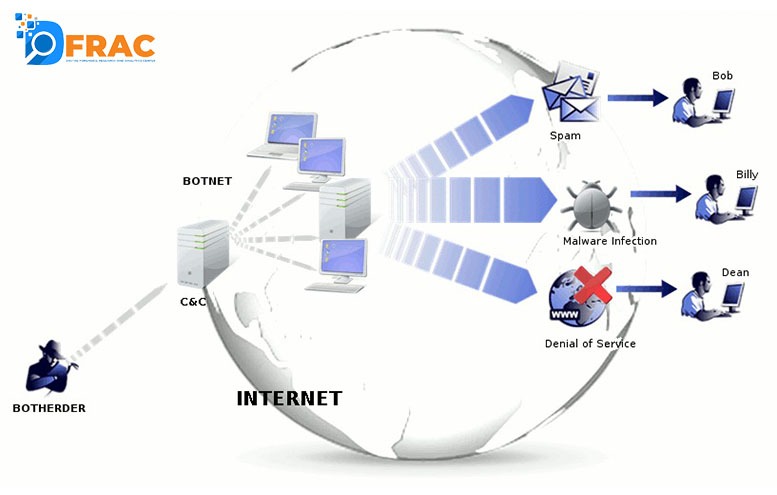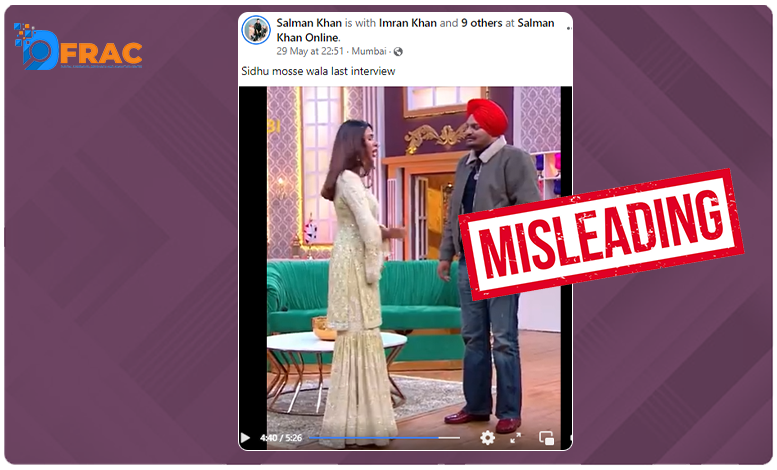The term Indian Illegally Occupied Jammu and Kashmir (IIOJK) has become central to Pakistan’s evolving propaganda apparatus, aiming to reshape global narratives on the Kashmir conflict. This terminology, particularly prominent after August 2019, reflects a calculated strategy to influence international perceptions and sustain Pakistan’s diplomatic stance on Kashmir.
The Dichotomy of Terminology: IIOJK Before and After the Abrogation of Article 370
Pre-Abrogation Era: The Use of “IOK” and Early Propaganda Networks
Historically, Pakistan referred to the region as Indian Occupied Kashmir (IOK) in its official communications and public discourse. Before August 2019, propaganda efforts relied heavily on decentralized networks within Kashmir itself, including social media-driven movements like the Burhan Wani model.
- Social Media as a Tool: Burhan Wani, the 22-year-old Hizbul Mujahideen commander, symbolized online resistance. Pakistan-based outlets amplified his widespread appeal among local Kashmiri youth, using his image to generate emotional engagement and mobilize support online.
- Legitimizing Narratives: During this period, the term IIOJK was sparingly used. Instead, the focus was on leveraging the growing social media presence of Kashmiris to promote terms like IOK and reinforce claims of occupation. This network laid the groundwork for a transition in rhetoric post-2019.
Post-Abrogation: A Shift in Rhetoric and Strategy
The abrogation of Article 370 by the Indian government in August 2019 marked a watershed moment in Pakistan’s Kashmir-related propaganda. This constitutional change, which revoked Jammu and Kashmir’s special autonomy, was met with severe criticism from Pakistan, framing the event as a unilateral annexation and a violation of international agreements.
- Emergence of “IIOJK”: In response, Pakistan began widely adopting the term IIOJK in official statements, international forums, and media campaigns. This shift in terminology sought to delegitimize India’s sovereignty claims over Jammu and Kashmir while embedding the notion of “illegal occupation” in global discourse.
- Social Media Campaigns: Pakistan’s strategic use of social media intensified, with government agencies, including the Inter-Services Public Relations (ISPR), coordinating efforts to amplify the IIOJK narrative. Hashtags like #IndiaViolatingIntLawsInIIOJK and #StandWithKashmir became central to these campaigns.
- Diplomatic Messaging: The term IIOJK was echoed in speeches, press releases, and resolutions, aiming to influence international organizations such as the United Nations and the Organization of Islamic Cooperation (OIC).
Institutionalization of the Term “IIOJK”
State Agencies: The Ministry of Foreign Affairs and the Inter-Services Public Relations (ISPR) are key players in ensuring the term’s visibility and normalization in both domestic and international discourse.
ISPR’s Media Propaganda on Kashmir
The Inter-Services Public Relations (ISPR), Pakistan’s military media and public relations wing, has been instrumental in popularizing IIOJK through a blend of military, political, and emotional narratives.
Songs and Music Videos
ISPR strategically employs music and visuals to evoke emotional resonance and amplify its narrative on Kashmir. A prime example is the patriotic song “Ja Chor Day Meri Wadi” (Leave My Valley), which portrays Indian actions in Jammu and Kashmir as oppressive while positioning Pakistan as a defender of Kashmiri rights. The song’s visuals underscore the victimhood of Kashmiris and reaffirm Pakistan’s commitment to their cause. With 56,000 views on YouTube, it exemplifies ISPR’s effective use of digital platforms to reach a global audience and promote the IIOJK narrative.
Animated Content
ISPR strategically targets younger demographics through creative formats like animated videos featuring characters such as Jimmy and Jaleel. These animated figures deliver news interwoven with propaganda messages about Kashmir, using a playful and comedic tone to make serious political narratives more relatable and engaging. By leveraging this approach, ISPR effectively sustains youth engagement, embedding the IIOJK narrative across generations and ensuring its long-term resonance.

YouTube Channel as a Key Propaganda Tool
ISPR’s official YouTube channel has emerged as a central platform for disseminating content featuring the IIOJK terminology, garnering the highest viewership under this keyword across the internet. An analysis reveals that ISPR accounts for 66.8% of total viewership related to this term, outpacing other prominent Pakistani media outlets such as Samaa TV and ARY News.
The channel’s most-watched video, titled “FREEDOM | RSS Mindset and Reorganisation Plan | IIOJK”, highlights its ability to capitalize on politically charged narratives. Released a year after the abrogation of Article 370, the video reflects a well-timed effort to sustain the discourse around Jammu and Kashmir while framing India’s policies as aggressive and oppressive. The video, like others on the channel, is tailored to evoke strong emotional responses, blending political messaging with visuals designed to amplify Pakistan’s stance on the Kashmir issue.



Collaboration with Allies: The Role of Chinese Media
Article 1: Commemoration of Kashmir Black Day
A recent article highlighted an event organized by the Pakistani Embassy in China to commemorate Kashmir Black Day, where the term IIOJK was prominently used. The event featured speeches by Pakistan’s top officials condemning India’s governance in Jammu and Kashmir, alleging human rights abuses, and calling for a UN-mandated resolution.
- Chinese Media’s Role: Coverage of this event by Chinese media demonstrated a deliberate amplification of Pakistan’s Kashmir narrative. By prominently featuring Pakistan’s messaging, Chinese outlets acted as conduits, ensuring the propagation of the IIOJK narrative to wider international audiences.
- Strategic Implications: This collaboration aligns with China’s broader diplomatic strategy of supporting Pakistan. It enables Pakistan to project its Kashmir rhetoric on global platforms while reinforcing China’s own geopolitical interests, including countering India in regional disputes.
Article 2: Indian Elections in IIOJK
Another article from Chinese media referenced IIOJK in the context of Indian elections, particularly the political contest between the Bharatiya Janata Party (BJP) and Congress. While seemingly unrelated to the Kashmir conflict, the coverage deliberately employed IIOJK to describe Jammu and Kashmir.
- Editorial Choices and Framing: The normalization of IIOJK in electoral coverage reflects a calculated editorial stance, signaling alignment with Pakistan’s terminology. By framing Indian elections within the Kashmir narrative, Chinese media subtly delegitimizes India’s sovereignty claims.
- Geopolitical Undertones: The emphasis on internal Indian politics, juxtaposed with the IIOJK terminology, positions India as politically contentious and vulnerable. This editorial strategy reinforces the broader Pakistan-China narrative while maintaining plausible deniability on direct interference.
China’s Diplomatic Alignment with Pakistan
The use of IIOJK by Chinese media highlights a deeper strategic partnership rooted in shared geopolitical objectives:
- CPEC and Regional Disputes: The China-Pakistan Economic Corridor (CPEC), which passes through Gilgit-Baltistan (a region India claims as part of Jammu and Kashmir), underscores China’s interest in supporting Pakistan’s Kashmir narrative. This mutual reinforcement delegitimizes India’s stance on the region while securing China’s economic and strategic investments.
- Influence on International Discourse: The adoption of IIOJK by a global actor like China lends credibility to Pakistan’s narrative, particularly in regions where Chinese media has substantial reach, such as Africa and Southeast Asia. For audiences unfamiliar with the conflict, this framing influences perceptions and strengthens Pakistan’s claims.
Screenshots, below further show the use of the term IIOJK in multiple articles describing Kashmir under the lines of Pakistan pretext.

Platforms and Usage Patterns: Amplifying the Term “IIOJK”
Pakistan’s strategic dissemination of the term “IIOJK” (Indian Illegally Occupied Jammu and Kashmir) relies heavily on social media platforms such as Twitter, Facebook, Instagram, and YouTube. These platforms serve as critical tools for shaping perceptions and amplifying narratives around Kashmir, targeting audiences globally and regionally.
Twitter: A Key Platform for Propaganda
A network of accounts operates in coordination to propagate narratives that cast the Indian Army in Kashmir in a negative light. These accounts frequently share content emphasizing alleged oppression, violence, and injustice in Kashmir. By leveraging emotionally charged imagery and captions, such as “Indian Brutality in IIOJK,” these posts provoke strong emotional responses from users.
The emotional nature of this content encourages high levels of interaction, including shares, likes, and comments, which helps the posts gain traction on Twitter’s algorithm. As these posts spread, they not only reinforce Pakistan’s narrative but also polarize opinions, ensuring sustained engagement from audiences on both sides of the political divide.
@PSYWAR Bureau: A Case Study
One of the key accounts identified in this campaign is @PSYWAR Bureau, which was created in March 2024. This account has shared 56 tweets containing the term “IIOJK,” focusing exclusively on Pakistan and Kashmir-related content. The tweets primarily consist of:
- Misleading news about the Indian Army’s activities in Kashmir.
- Graphical images portraying alleged human rights abuses.
According to an analysis conducted by DFRAC, 12 out of these 56 tweets were identified as false or misleading. The account’s consistent focus on emotionally provocative content makes it a significant player in spreading misinformation about Kashmir.
@Hello Pakistan: Consistent Messaging Since 2021
Another account, @Hello Pakistan, created in July 2021, has been actively pushing the “IIOJK” narrative with 77 tweets to date. DFRAC’s analysis uncovered that 14 of these tweets contained false news.
@Atban: Sustained Campaign Since August 2021
The account @Atban, created in August 2021, has shared 96 tweets featuring the term “IIOJK”. Among these, DFRAC identified 10 instances of false news.

The content shared by these accounts often revolves around highly emotive themes, such as human rights abuses, oppression, and violence. Videos and posts depicting the Indian military are accompanied by captions designed to elicit outrage, such as “Indian Brutality in IIOJK.” This strategy not only fosters engagement but also exploits social media algorithms, ensuring that such content is prioritized in users’ feeds.
The Dual-Language Strategy
The predominance of English and Urdu in content using the term IIOJK (Indian Illegally Occupied Jammu and Kashmir) provides significant insights into the targeted audiences and strategic objectives of Pakistan’s narrative dissemination.
Target Audiences and Purpose
English-language content primarily targets global audiences, including policymakers, international media organizations, human rights bodies, and NGOs. The use of English allows Pakistan to frame the Kashmir conflict as a violation of international law and human rights, appealing to Western and non-Western English-speaking countries. Additionally, English content engages diaspora communities, especially those in Europe, North America, and the Gulf, who often participate actively in international discussions on Kashmir.
In contrast, Urdu-language content is aimed at domestic audiences within Pakistan and Urdu-speaking communities in Jammu and Kashmir. It seeks to rally local support, foster solidarity with Kashmiris, and reinforce the narrative of resistance against India. Urdu content often carries emotional and cultural undertones, drawing on religious symbolism, historical grievances, and nationalist rhetoric to deepen engagement with regional audiences.
The use of both languages ensures greater accessibility and reach. English amplifies the narrative on international platforms, while Urdu resonates with grassroots and regional audiences, particularly in South Asia. This dual-language strategy bridges the gap between local, regional, and global audiences, creating a unified narrative that operates across geographies.

Pakistani Embassies Amplify IIOJK Narrative
The official Twitter handles of Pakistan’s embassies in various countries have actively amplified the term “IIOJK” (Indian Illegally Occupied Jammu and Kashmir) through targeted posts. A detailed analysis reveals notable activity levels, with the UAE leading at 32 tweets, followed by Germany at 33 and China at 35. South Asian nations such as Bangladesh (20), Sri Lanka (29), and the Maldives (30) also exhibit significant engagement. Interestingly, Iraq, with just six tweets, shows relatively lower activity. This pattern indicates a coordinated diplomatic effort to propagate Pakistan’s narrative on Kashmir, targeting both regional neighbours and influential global players.
The timing of these tweets aligns with significant dates tied to the Kashmir conflict, such as August 5 (marking the abrogation of Article 370), February 5 (Kashmir Solidarity Day), and July 13 (Martyrs’ Day in Kashmir). Additionally, spikes in activity are observed during international events like UN sessions, suggesting a strategic effort to leverage global attention.


Hashtag Analysis
A closer examination of the most frequently used hashtags alongside #IIOJK reveals a coordinated effort to amplify Pakistan’s Kashmir narrative on social media. These hashtags, including #IndianDemocracyExposed, #MatyrsBloodNotGoWaste, #IndiaViolatingIntLawsInIIOJK, #KashmirBanegaPakistan, #KashmirHumanRights, and #RapeWeaponOfWar, often appear with emotionally charged visuals and statements like “Kashmir is bleeding” or “Justice for Kashmir.” The recurring use of these hashtags underscores a strategy focused on drawing attention to alleged human rights abuses and portraying India’s actions in Jammu and Kashmir as illegal and oppressive.
Significantly, these campaigns tend to peak around key dates, such as August 5 (marking the abrogation of Article 370), February 5 (Kashmir Solidarity Day), and July 13 (Martyrs’ Day). During these periods, hashtag activity intensifies, with campaigns leveraging international events—particularly UN sessions—to amplify their reach. For instance, on the anniversary of the Article 370 abrogation, the hashtag #KashmirBleeds surged by 75%, reflecting a sharp increase in engagement with content that focuses on human rights issues in Kashmir.

Conclusion
Through a coordinated and systematic effort, Pakistan has weaponized social media platforms, diplomatic channels, and even entertainment media to distort the narrative on Kashmir, often relying on misinformation and emotional manipulation. The reliance on emotionally charged hashtags and carefully timed campaigns exposes a deliberate strategy to provoke division, polarize opinions, and undermine India’s sovereignty on the global stage. The involvement of state agencies like ISPR and their collaboration with allied media outlets raises ethical concerns about the misuse of digital platforms and the spread of biased, one-sided narratives.
Despite these efforts, the credibility of Pakistan’s campaigns is undermined by the repeated use of false or misleading content, raising doubts about the authenticity of its claims. The highly politicized and divisive nature of these campaigns risks further alienating international stakeholders, diminishing the potential for constructive dialogue on the Kashmir issue.







